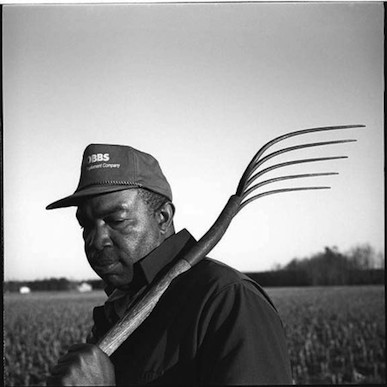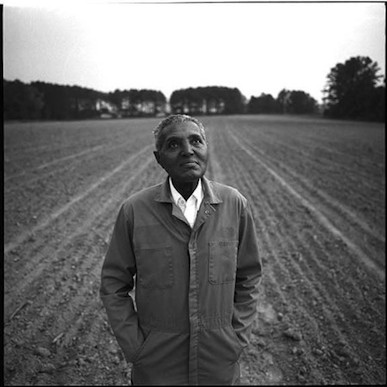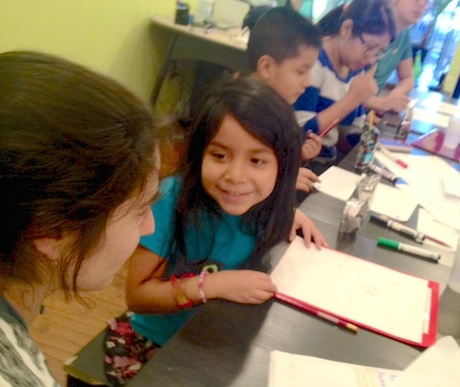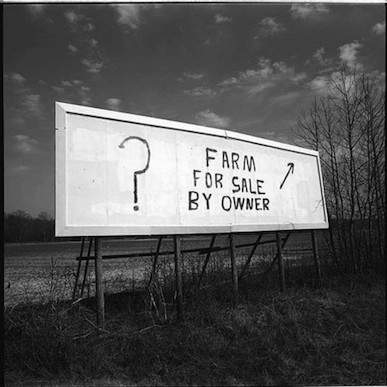When riding Philadelphia's subways, few have reason look out the window at the dark tunnels whizzing by. But with the help of a Knight Foundation grant, artist and curator Sean Stoops is offering an exciting impetus to put down our iPhones and Kindles and pay attention.
Stoops, a Philly-born artist and curator, grew up in South Jersey and studied painting at Tyler School of Art. He's one of nineteen recipients of a grand total of $780,000 in new Knight grants for arts and culture projects in the region announced in May. Keystone Edge is taking a look at three of the most exciting projects.
From 2011 to 2013, the John S. and James L. Knight Foundation offered its Knight Arts Challenge in Philadelphia, awarding matching grants to fund 114 local concepts across three years. Despite the conclusion of that program, the foundation's continues to support local cultural institutions and art-makers as diverse as the Bearded Ladies Cabaret (for “an interactive pop-up opera inspired by the life and legacy of Andy Warhol”), the Philadelphia Sculpture Gym and the Philly Youth Poetry Movement. (Here's a full list of the recipients.)
Before winning a Knight Arts Challenge grant in 2012 for a series of 3-D video installations, Stoops earned a graduate degree in curating through the international Transart Institute. Last summer, he had the opportunity to apply to Knight for a new grant, scoring $27,000.
The winning concept is “animated art in the subways…that would not be electronic,” he explains. Stoops imagines several panels mounted in sequence on the wall of a tunnel: “When trains are going by and these images are lit up, the passengers on the train would see this very short animated image.”
It's the same concept behind film — many frames flash by each second to make a moving image — or the pages of a flip-book.
Stoops didn't come up with the idea of using a train's motion to create an animated image: versions of the concept have appeared in Washington, D.C., New York City, Europe and Japan. The concept may also have appeared in our region as an advertisement, “but it's never been done as an art project in Philadelphia,” he asserts.
Stoops is hoping SEPTA, PATCO or both agencies might be willing to host the project, and while he has yet to choose an official partner or artists, he's already in conversations with Mural Arts, which has collaborated with him in the past.
The panels — painted, printed or developed as collages — would be created outside the tunnels and then installed, and could feature shifting abstract shapes or designs, or a single character who gestures as the train goes by.
There are a lot of factors at play. Lighting is one — Stoops suggests a long-lasting LED light system activated by the motion of the train. He'll also need to consider the size and number of panels needed for an animation lasting one to two seconds, as well as the typical speed of the train at that particular place: Will it be going fast enough for the panels to become animated?
Stoops hopes that marketing the installations will help riders look out for them, but some will be surprised, and look forward to a second peek the next time they whiz by. He's aiming to launch the installations in 2015, and thinks the Knight grant will cover at least two separate animations. The project could expand with additional funding.
“We want to bring video or electronic or interactive art to unusual spaces,” adds Stoops. “And also keep trying to reach audiences who don't see that kind of art on a regular basis.”
Write On
Another of this year's noteworthy Knight recipients is Mighty Writers, founded in 2009 by former Philadelphia Weekly editor Tim Whitaker, a 30-year journalism veteran.
Mighty Writers, which offers after-school homework help, mentoring, writing workshops and SAT prep for local youth ages 7 to 17, launched in its original location at 15th and Christian Streets. A second location, under longtime Philadelphia Inquirer columnist Annette John-Hall, operates at 39th and Lancaster Avenue in West Philly.
Now, a $75,000 Knight grant will go towards opening a third location: a bilingual writing and mentorship center in an Italian Market storefront, specially geared to serving local Mexican-American families.
“We're not going to land in Chestnut Hill or Bryn Mawr,” explains Whitaker. “We deliberately look for areas where we know we can have a big impact immediately.”
Mighty Writers started working with the Mexican community about two years ago, beginning with a summer camp that grew into a Saturday afternoon school-year program.
“We like to embed ourselves in the communities so we can reach the kids directly,” adds Whitaker, comparing Mighty Writers to Wawa — “We're open all the time.”
He also notes that this isn't a program meant for aspiring professional writers, though some might choose that challenging path. When kids learn to think with enough clarity to organize their ideas into words, this translates into good decision-making skills in all areas of life, not to mention the development of communication skills that will benefit them in any career.
“You can't write anything that anyone can understand unless you're thinking clearly first,” he explains, touting the major boosts in self-esteem that follow when youngsters are encouraged to follow their interests in writing, whether it's via blogs, poetry, or stories inspired by a favorite TV show. “Whatever the kids are talking about, we build workshops around them.”
“It's a community we feel strongly about,” he says of expanding the program's offerings to Mexican-American youth at the new location. The kids are already enthusiastic: “They show up to our writing workshops a half-hour early, ready to go.”
Building a Legacy
That isn't the only Knight grant helping a Philly institution build on its existing mission.
The African American Museum in Philadelphia received $50,000 to enhance two current art exhibits: the photography of “Distant Echoes: Black Farmers in America,” and the sculpture of “Syd Carpenter: More Places of Our Own.” The Knight-supported programming, dubbed “Beyond Sustenance,” will encompass interactive storytelling, art-making, community dining, and workshops centered on African-American traditions in farming, cooking and more.
The exhibits and programs are “exploring this very complex relationship that African Americans have had with the land, with slavery, through share-cropping, to urban farming and farm enterprises and agribusiness today,” says Museum president and CEO Patricia Wilson Aden.
The grant will help to codify a “historical legacy” and support “contemporary expression,” she adds. That means digging into the cultural and heritage traditions beyond growing and cooking food, even though there is a lot of troubling history there that “we struggle to reconcile…with our image of ourselves and our community.”
The “Beyond Sustenance” program's main showcase will be a Heritage Dinner on July 20, happening through a partnership with First Person Arts. Guests will experience the museum's current exhibitions alongside live storytellers. Then everyone will sit down to a family-style dinner in the institution's auditorium.
It will be a “multi-century” and “multi-dimensional” experience, Aden adds, featuring sculpture, photography, storytelling, music, conversation and a meal “expressing and celebrating our traditions and our connections with the land, with farming and with food.”
“Beyond Sustenance” will also include a variety of workshops for kids and families, including planting, making art with organic forms and cooking. Ultimately, the grant will also help the museum install an interactive “Talk Back Wall” where visitors can share pictures, memories or recipes.
“In so many instances, African-American traditional foods are thought to be unhealthy,” notes Aden. “So how do we translate those traditional tastes…into something healthier?”
A partnership with the Dorrance Hamilton Center for Culinary Enterprises will help make these workshops and the dinner possible.
Aden says the Knight grant “is not only supporting our programming, but they're supporting the museum in our direction,” which is integral not just to existing shows, but the institution's future. This “transformative” grant comes at an important time for the African American Museum, she adds, “allowing us to stretch in a way that we have always wanted to stretch.”
ALAINA MABASO, a Philadelphia-based freelance journalist, has landed squarely in what people tell her is the worst possible career of the twenty-first century. So she makes Pennsylvania her classroom, covering everything from business to theater to toad migrations. After her editors go to bed, she blogs at http://alainamabaso.wordpress.com/. Find her on Twitter @AlainaMabaso.
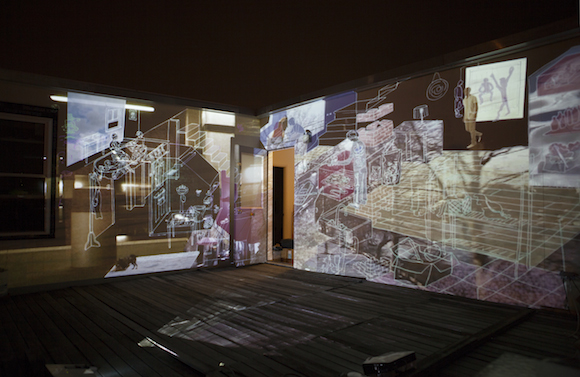

.jpg)
.jpg)
